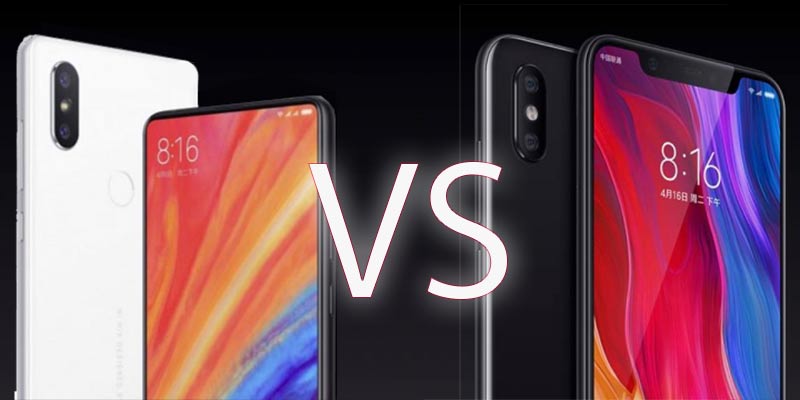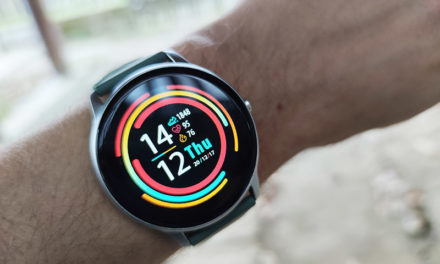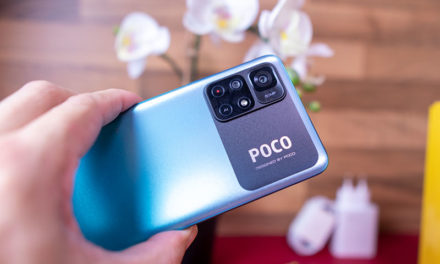
Xiaomi What is 8 against Xiaomi MI MIX 2S, or what do I like?

Xiaomi is completely unusual with two top phones on the market, but they look just like a glance at the first glance.

contents show
Introductory
When last year, Xiaomi introduced the Xiaomi Mi MIX 2 phone, one of our eyes cried and the other laughed. On the one hand, the phone was a worthy successor to the style maker Mi MiX, but on the other hand, we got less of it than we expected. Perhaps this was due to the fact that this year, in a completely unusual way, the company has renewed the second MIX after half a year and launched the MIX 2S, which really had the capability - mostly in cameras - that we expected from the first version.

Meanwhile, however, the time has come to renew the company's flagship, as the MI 6 was as good a phone as it was slowly falling into the field. We've been waiting for the appearance of Mi 7 for a long time, but it turned out that we did it because the company jumped in the numbering and immediately with Mi 8 surprised the world. As an explanation of the jump, it was suggested that this phone is a jubilee that is presented to the company's eighth birthday. There is a lot of crosstalk with the Apple iPhone X, but it's a bit more understandable to refer to the decade-long history than to the eight in Xiaomi because it could have been the seventh or ninth year with that power. This crosstalk was reinforced by the look of the phone, which unmistakably duplicates the US top phone.
The Chinese manufacturer, therefore, has been interesting in recent months, unexpected turns, but undeniably great mobiles have been introduced to the market. Therefore, many people may wonder which of the two phones that are almost identical to hardware. The answer may sound plausible as you like. But the situation is not that simple, because although there are many similarities in the hardware of the two phones, they are not nearly the same as for Mi 8, so the choice for those who do not like notch phones is really not easy.

In this article we will try to answer the question. Of course we do this without real testing, but that will not be a problem, as the chip sets are the same, so the synthetic measuring programs do not reveal any particular difference.
chipset

The two phones therefore use the same chipset. In this case, the chipset is deceptive as well, since we are talking about SoC, which is an English word system, an acronym from System on Chip, meaning a system on a chip. In these inserts you will find everything you need to operate the phone. The processor includes graphics accelerator, memory manager, image processors, and modems, which means that phones with the same chip can provide almost the same performance. There are, of course, exceptions, for example, the Xiaomi gamer's phone, in which SoC has been cooled, and with better heat dissipation, it can spin for a number of times at maximum speed so it can add some extra cocoa to the system.

Xiaomi Mi MIX 2S and Xiaomi Mi 8 are based on the market's current peak chip, the Qualcomm Snapdragon 845 platform, the first SoC that uses the DynamIQ big.LITTLE CPU architecture. The CPU contains four 2,8 GHz Kryo 385 cores and four 1,8 GHz Kryo 385 cores. The faster cores of ARM Cortex-A75 are slower than those of ARM Cortex-A55. The 845 processor has an average 25% increase in performance compared to Snapdragon 835, which contains four 2,45 GHz Kryo 280 cores and four 1,90 GHz Kryo 280 cores. For graphics acceleration, a Qualcomm Adreno 710 GPU running on a 630 MHz clock is responsible. This has also improved much in the previous peak, compared to the GPU in 835. According to Qualcomm, the performance gain was a percentage of 30, while energy gain did not increase, but also decreased the 30 percentage. Snapdragon 845 also uses the new Hexagon 685 DSP, which is three times stronger in AI performance and in the processing tasks of the neural network. The chip is capable of supporting 4K displays, but has also been prepared to work in VR glasses, so it can drive up to two 2400 x 2400 pixel displays with either 120 Hz upgrade. Can play 4K HDR videos with Dolby Vision, HDR10, and HLG (Hybrid Log Gamma) support. Phones can be purchased with a variety of memory and mass storage, which is common to the soC so that LPDDR4X memory modules can be found on the phone and the UFS 2.1 technology works with the UFS.

It is clearly visible that the basics that these two phones are built on are prime. It has been a question for a long time that Qualcomm has been able to serve all of its partners because the tile has been overwhelmingly demanded, and all of the leading manufacturers have been trying to introduce a phone that is built in front of others. Now it can be said that there was no output, and there is no doubt that there will be a problem, so there is no obstacle to appearing on the market more and more Snapdragon 845-based phones.
Display
The display is the point to make the two phones the easiest to distinguish. MIX 2S received an out-of-the-box appearance, which is usually frameless on three sides, the fourth being a bit thicker, where there is no picture, where the sensors and cameras are located, as well as the speaker used for conversation.

The Mi 8, on the other hand, carries a notch design that is loved by some, others hated by others. This layout was one of the great novelties of the iPhone X. Apple did, in essence, but did not implement the full spectrum in percent. Not entirely, because at the top edge there is a small peninsula, which is called notch. On this little peninsula there are sensors and chambers, and of course the loudspeaker. The width of the notch differs from one phone to another, and are narrower and wider, depending on how much everything is to be placed on it.

And for Mi 8 there was something to pack. In addition to the usual things, there is an infrared light source and an infrared sensor. This camera is Omnivision's OV7251 sensor. With this Mi 8 is the first Android phone to use this technology.
So far, there are two significant differences between phones:
- Xiaomi Mi 8: Notch display
- Xiaomi Mi MIX 2S: a conventional frameless display
- Xiaomi Mi 8: Infrared solution for face recognition
- Xiaomi Mi MIX 2S: conventional camera face recognition
However, the differences are not over yet, and even now, one of the most significant differences is coming. Mi MIX 2S has a built-in IPS based on the 18: 9 aspect ratio and FHD + resolution. In this case, this means 2160 x 1080.

In contrast, Mi 8 has AMOLED display, which is definitely better than IPS. Of course, there are disadvantages, but it's better for display, contrast ratio and color fidelity, and here's the point. As AMOLED uses every pixel as a separate light source, it also displays the infinite black, that is, the actual black color. For IPS, no matter how advanced the technology is because of the backlight it will not be perfect for black tones.
Mi 8 also got FHD + resolution, but since the aspect ratio is different, the resolution is different. The exact data shows the diagonal 6,21 col, the aspect ratio for 18,7: 9, and the resolution is 2248 x 1080 pixels.
Third significant difference, display technology:
- Xiaomi Mi 8: Samsung AMOLED display
- Xiaomi Mi MIX 2S: IPS display
Kamerák
Let's start right away with the camera where the major difference is found, and in this case the front panel detector. For Mi MIX 2S, this camera is already traditional, it is the same as that used in the MIX 2 and Redmi 5 Plus phones, so we get Omnivision OV 6570 with 5 megapixel resolution and f / 2.0 aperture lens.

In contrast, the Mi 8 got a 20-megapixel camera pre-installed with the Samsung S5K3T1’s sensor, also covering the f / 2.0 lens. The interesting thing about the sensor is that not only its resolution, but also its physical size is larger than we could get used to from an average telephone self-contained camera. The larger size also results in a large pixel size, in this case 1.8um. The large physical size of the sensor, and of course the large pixels that come with it, results in more light reaching each pixel, so it is no longer surprising that the above-mentioned f / 2.0 and aperture, which are outstanding values among self-contained cameras, are not surprising. The camera is not only powered by more powerful, serious, artificially intelligent software, so it has a role in face recognition, but it is also capable of 3D facial enhancement. If that wasn’t enough, you might want to know that the software can map up to 52 different facial muscle movements, creating an extremely well-animated avatar for video chat.

The rear camera does not have any new or distinct features, and even the hardware is exactly the same as the two phones. This is not a bad thing because the 2S camera of MIX is absolutely good. Hardware has two 12 megapixel sensors, one of which offers a very good f / 1.8 aperture lens while the other works with a f / f2.0 telephoto lens. We find the electronic image stabilization in the camera, but there is also OIS, which means a four-axle plus stabilization, helping to produce vibration-free shots. This system uses the built-in gyroscope and accelerometer, while the camera is powered by eight micromotors based on real-time values. Thanks to the two cameras and the telephoto lens we get hardware depth reading and of course there is regular zoom, not just software that is customary in cheap phones, but a real hardware solution.

To say no hardware, and if you add Xiaomi's artificial intelligence, then we can see that we can work with real high-end iron.
However, there are some small differences between the two phones, mostly due to the Mi 8’s enhanced camera software. According to the DxOMark score, MIX achieved 2S 101, Mi 8 105. Fortunately, the difference is only in software, so there’s nothing stopping the Xiaomi Mi 8 and Xiaomi Mi MIX 2S from improving together in terms of the rear camera later.
Fourth Significant Difference Front Panel Camera:
- Xiaomi Mi 8: 20 megapixel, with AI technology
- Xiaomi Mi MIX 2S: 5 megapixel, traditional
sensors
There are several versions of Xiaomi Mi 8. In addition to the budgeted version of SE and the center-positioned, smoothly named Xiaomi Mi 8, a version of Explorer Edition also came in, which brought interesting improvements.
face Detection

Although the traditional Mi 8 also received an infrared LED and sensor, there was news that it was not yet a 3D solution known in the iPhone X. Since we have found conflicting opinions on this, let’s stay on the net for the time being to the extent that the 3D version can only be found in the Explorer version. If this is not the case, we will soon find out what the truth is. Once we’re here, it’s important to tell us how things work. The infrared LED emits light at a wavelength of 940 nanometers, which the camera captures with an image accuracy of 0,3 micrometers. The phone software removes all data from the captured image that is not related to the face, i.e., compares environmental elements and the like with the rest of the stored information. The technology has many benefits. It’s essentially deceptive, we can’t be fooled by a photo, but not even with a well-done 3D mask, and it can even identify us while wearing glasses, even sunglasses, as infrared light penetrates even tinted glass. Another advantage is that the resolution is faster than with conventional cameras.
Fingerprint identification
For normal Mi 8, the fingerprint reader is also conventional. True, according to the descriptions, the built-in FPC1291 sensor allows faster detection than the average, which is associated with the speeding-up of the device. In this phone, for example, our fingerprints can be approved for our purchases, but can be used for example in the camera application.

But the real interesting thing is not that, but the fingerprint sensor in the Explorer version. Xiaomi solved this with the Synaptics Clear ID FS9500 sensor, making the Xiaomi Mi 8 Explorer Edition the first pressure-sensitive fingerprint solution smartphone.
Summary
Of course, I would be able to write pages about phones, list their benefits and novelties, and I might just do that, but not now. This article is only intended to help you decide if you are considering taking Xiaomi Mi MIX 2S or Xiaomi Mi 8, so we have taken the most significant differences in hardware. Apart from the above, there are, of course, subjective considerations, basically whether or not the particular phone is. The exterior is completely different, but everyone can see it in the photos and decide that it is more appropriate for the lesser knowledge and Xiaomi Mi MIX 2S or insists on the latest and whether or not it likes the notch or nor will you buy Xiaomi Mi 8. We hope this article will help you make the decision.
If you liked this article, please share it with your friends Facebook or other popular channel. Thank You!
If you want to buy a phone, look around here:
Xiaomi Mi 8 several variants: Xiaomi Mi 8
Xiaomi Mi MIX 2S is a variety of variants: Xiaomi MI MIX 2S
Remember, when buying, choose the EU Express - Priority Line delivery method so that you do not have to pay customs duties and VAT!















